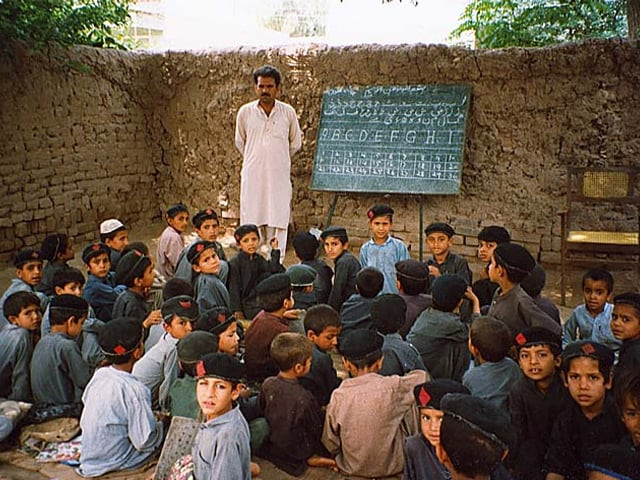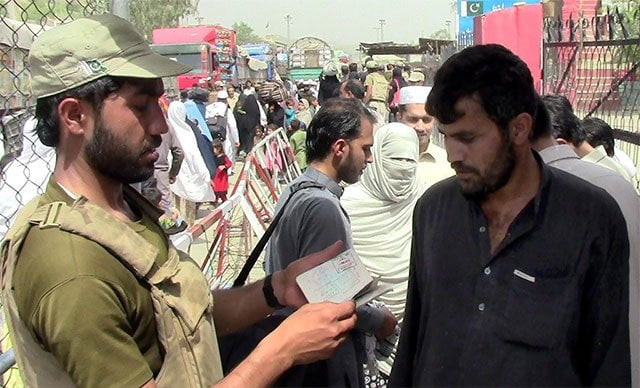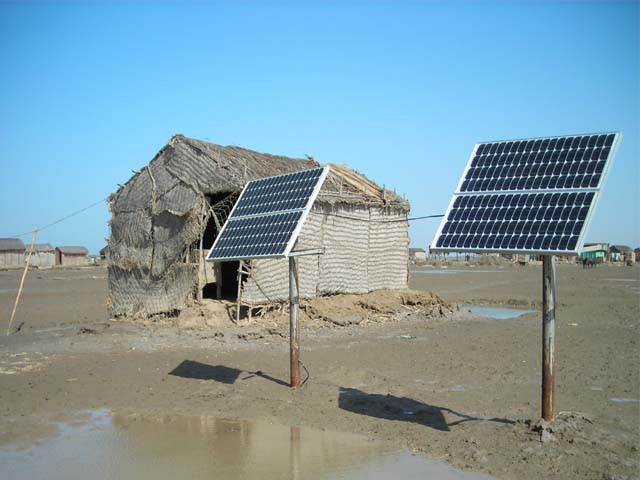Business
Gap stock falls as retailer misses sales expectations, warns tariffs will impact profits

Gap stock fell in extended trading on Thursday after the company warned tariffs will impact its profits moving forward.
When Gap last reported results in May, it said it expected tariffs to cost between $100 million and $150 million on a net basis, but on Thursday, it said those costs are now going to be between $150 million and $175 million.
Its full-year operating margin is expected to be between 6.7% and 7%, down from 7.4% in the previous fiscal year, reflecting a tariff impact between 1 percentage point and 1.10 percentage points.
In its current quarter, its expecting its gross margin to be down between 1.5 and 1.7 percentage points, driven by tariff costs.
Beyond tariffs, the specialty apparel company behind Old Navy, Athleta, Banana Republic and its namesake banner delivered mixed results in its fiscal second quarter. Here’s how Gap performed in the quarter compared with what Wall Street was anticipating, based on a survey of analysts by LSEG:
- Earnings per share: 57 cents vs. 55 cents expected
- Revenue: $3.73 billion vs. $3.74 billion expected
The company’s reported net income for the three-month period that ended Aug. 2 was $216 million, or 57 cents per share, compared with $206 million, or 54 cents per share, a year earlier.
Sales rose to $3.73 billion, up slightly from $3.72 billion a year earlier. Sales came in lower than expected and so did comparable sales. During the quarter, comparable sales rose 1%, weaker than the 1.9% rise that analysts had expected, according to StreetAccount.
While Gap, Banana Republic and Old Navy all saw comparable sales rise during the quarter, Athleta dragged down the company’s overall performance with comps down 9%.
“Clearly, Athleta is a powerful brand in the active space, being the number five brand in the space, but we’re disappointed in the quarter. We have moved away, if you will, from really distinctive performance roots,” CEO Richard Dickson told CNBC in an interview. “We’ve paid a lot of attention, trying to court a new customer, and ultimately didn’t have enough offerings for our core customer. As we balance that out, we’ve been very transparent to say it’s a year of reset for us.”
Last month, Gap announced that Maggie Gauger, a longtime veteran of Nike, had been tapped as Athleta’s next CEO — the third top executive hired to helm the brand in the last two years.
The company reaffirmed its fiscal 2025 net sales growth outlook and is continuing to expect revenue to grow between 1% and 2%, in line with estimates of 1.6%, according to LSEG. For the current quarter, Gap is expecting sales to grow between 1.5% and 2.5%, better than the 2% that analysts had estimated, according to LSEG.
To offset the impact of tariffs, Gap is doing what other companies are doing: working with its suppliers, adjusting its sourcing, diversifying its supply chain and taking targeted price increases where appropriate.
Notably, the company said it doesn’t expect the annualization of tariffs to cause any further declines in operating income in 2026.
“As it relates to pricing, we’re making targeted adjustments with pricing, as we always do. There isn’t anything that we’ve done that is substantially different,” Dickson said. “We focus on making sure that we’re presenting to our consumer the right value proposition, and ultimately want to make even more sure that we’re sustaining the momentum and market share gains that our playbook has been performing.”
Just over two years into Dickson’s tenure as Gap’s CEO, the company is in a far different position. It’s seen six straight quarters of comparable sales growth, it’s sitting on a $2.2 billion cash pile and its brands are back at the center of culture and conversation.
Recently, Gap launched its “Better in Denim” campaign featuring Katseye and Kelis’s 2003 hit “Milkshake.” Dickson said the campaign has been a standout success, delivering 20 million views in the first three days, 400 million total views and 8 billion impressions. It’s also the No. 1 search on TikTok, Dickson said.
“We could all acknowledge that Gap moved from what was a clothing retailer just a couple years ago, that was overly promotional and didn’t have necessarily a strong voice from a merchandising perspective to consumers, and now today, it is a pop culture brand that’s telling great stories, driving great merchandising initiatives and arguably shaping culture with some of the programs and products and marketing campaigns,” Dickson said. “This is proving that Gap is a powerful pop culture brand, and this is also what our playbook looks like when you get it right.”
The campaign highlights the efforts Gap is taking to stay competitive in the crucial denim category, especially with Levi’s recent partnership with Beyoncé and American Eagle‘s campaign with Sydney Sweeney. At a time when consumers are pulling back on nice-to-have products like new clothes and accessories, retailers have had to do more to cut through the noise and ensure they’re resonating with consumers.
Still, as the company continues to make strides in its turnaround plan, Wall Street has come to expect a lot, and Gap has had to work harder to beat expectations.
During the quarter, its gross margin came in at 41.2%, behind expectations of 41.9%, according to StreetAccount.
Here’s a closer look at how each brand performed:
Old Navy: Gap’s largest and most important brand saw sales of of $2.2 billion, up 1% compared with last year. Comparable sales were up 2%, compared with expectations of up 2.2%, according to StreetAccount.
Gap: The namesake banner saw net sales of $772 million, up 1% compared with last year. Comparable sales were up 4%, compared with expectations of 4.1%, according to StreetAccount. Its the seventh consecutive quarter of comparable sales growth.
Banana Republic: The safari-chic, business essentials brand saw net sales of $475 million, down 1% compared with last year. Comparable sales were up 4%, far ahead of expectations of 0.2%, according to StreetAccount.
Athleta: The athleisure brand saw sales of $300 million, down 11% compared to last year. Comparable sales were down 9%. The brand’s new CEO is looking to reverse that slump and reconnect with Athleta’s core consumer.
Business
Eli Lilly cuts cash prices of Zepbound weight loss drug vials on direct-to-consumer site

The Eli Lilly logo appears on the company’s office in San Diego, California, U.S., Nov. 21, 2025.
Mike Blake | Reuters
Eli Lilly on Monday said it is lowering the cash prices of single-dose vials of its blockbuster weight loss drug Zepbound on its direct-to-consumer platform, LillyDirect, building on efforts by the company and the Trump administration to make the medicine more accessible.
The announcement also comes weeks after chief rival Novo Nordisk unveiled additional discounts on the cash prices of its obesity and diabetes drugs.
Starting Monday, cash-paying patients with a valid prescription can get the starting dose of Zepbound vials for as low as $299 per month on LillyDirect, down from a previous price of $349 per month. They can also access the next dose, 5 milligrams, for $399 per month and all other doses for $449 per month, down from $499 per month across those sizes.
Zepbound carries a list price of roughly $1,086 per month. That price point, and spotty insurance coverage for weight loss drugs in the U.S., have been significant barriers to access for some patients.
Eli Lilly’s announcement comes just weeks after President Donald Trump inked deals with Eli Lilly and Novo Nordisk to make their GLP-1 drugs easier for Americans to get and afford. The agreements will cut the prices the government pays for the drugs, introduce Medicare coverage of obesity drugs for the first time for certain patients and offer discounted medicines on the government’s new direct-to-consumer website launching in January, TrumpRx.
But Eli Lilly’s deal with Trump centers around lowering the prices of a different form of Zepbound – a multi-dose pen – after it wins Food and Drug Administration approval.
That means Eli Lilly’s Monday announcement around cutting prices on the existing single-dose vials could allow more patients to get discounted treatments more quickly.
“We will keep working to provide more options — expanding choices for delivery devices and creating new pathways for access — so more people can get the medicines they need,” said Ilya Yuffa, president of Lilly USA and global customer capabilities, in a statement.
Eli Lilly’s stock, which has climbed more than 36% this year, fell nearly 2% on Monday. Its meteoric rise due to the success of Zepbound and its diabetes injection Mounjaro vaulted it to becoming the first health-care company to hit a $1 trillion market value last month. Though cutting prices means lower revenue per medication sold, Eli Lilly’s sales — and shares — have continued to soar through past pricing announcements as demand balloons.
With single-dose vials, patients need to use a syringe and needle to draw up the medicine and inject it into themselves. Eli Lilly first introduced that form of Zepbound in August 2024.
It’s unclear how many patients are currently using single-dose vials of Zepbound. But Eli Lilly previously said that direct-to-consumer sales now account for more than a third of new prescriptions of Zepbound.
Novo Nordisk earlier this month lowered the price of its obesity drug Wegovy and diabetes treatment Ozempic for existing cash-paying patients to $349 per month from $499 per month. That excludes the highest dose of Ozempic.
The company also launched a temporary introductory offer, which will allow new cash-paying patients to access the two lowest doses of Wegovy and Ozempic for $199 per month for the first two months of treatment.
Business
OBR chairman resigns over Budget leak

The chairman of the Office for Budget Responsibility (OBR) has resigned over the early publication of the watchdog’s forecasts.
Richard Hughes said he was resigning to allow the OBR to “quickly move on from this regrettable incident”.
His resignation follows publication of a report that described the leak as “the worst failure in the 15-year history of the OBR” and strongly criticised the watchdog’s processes for protecting sensitive information.
In a letter to the Chancellor and the chairwoman of the Commons Treasury Committee, Mr Hughes said he took “full responsibility” for “the shortcomings identified in the report”.
He said: “By implementing the recommendations in this report, I am certain the OBR can quickly regain and restore the confidence and esteem that it has earned through 15 years of rigorous, independent economic analysis.”
Mr Hughes has served as chairman of the OBR since 2020 and was reappointed to the job for a second five-year term in July this year.
Speaking in the Commons as the news of the resignation broke, Chief Secretary to the Treasury James Murray offered the Government’s thanks to Mr Hughes “for his dedication to public service”.
Later, the Chancellor herself offered her thanks for Mr Hughes’ “many years of public service”, adding: “This Government is committed to protecting the independence of the OBR and the integrity of our fiscal framework and institutions.”
Conservative leader Kemi Badenoch accused the Chancellor of using Mr Hughes as a “human shield” and called on Rachel Reeves to resign.
Liberal Democrat Treasury spokeswoman Daisy Cooper said Mr Hughes was “a dedicated public servant” who had “rightly taken responsibility for a failure on his watch”, adding the OBR needed to learn from its “catastrophic error”.
Treasury Committee chairwoman Dame Meg Hillier also thanked Mr Hughes, saying: “I commend his decision to take full responsibility for the incident and I wish him well for the future.”
The Treasury said it would begin the process of finding a replacement for Mr Hughes “in the coming weeks”.
The OBR launched an investigation after official forecasts were uploaded to the watchdog’s website, releasing details of the Budget almost an hour early.
In a report published on Monday, the OBR said the leak had been “seriously disruptive to the Chancellor, who had every right to expect that the (forecasts) would not be publicly available until she sat down at the end of her Budget speech”.
Noting Mr Hughes had already “rightly” apologised for the leak, the report said it was “not a case of intentional leakage” or a matter of pressing publish too early.
The OBR said it was caused by two errors linked to the WordPress publishing site it used.
The report into the incident said that, while it knew web addresses for its files follow a pattern, it assumed “the protections provided” by WordPress “would ensure it could not be accessed”.
But two configuration errors were the technical causes of the premature access.
The forecast for the last spring statement in March was also “accessed prematurely” on one occasion, the report noted, but concluded that no activity appeared to have been taken as a result and the most likely explanation is “benign”.
The report recommended a review of the watchdog’s processes for publishing such documents.
“To rebuild trust, the leadership of the OBR must take immediate steps to change completely the publication arrangements for the two important and time-sensitive documents containing the results of its biannual forecasts that it publishes in a normal year, and review arrangements for all other publications,” the report said.
One option would be for the watchdog to use the Government’s digital architecture but publish when it wants.
Another would be to have the Treasury publish the forecasts for the Budget and spring statement, but this would only work if safeguards for “real and perceived independence” could be put in place.
There may need to be an interim solution, the report noted, but said new arrangements must be in place in time for the next statement in spring 2026.
Business
OGRA Announces LPG Price Increase for December – SUCH TV

The Oil and Gas Regulatory Authority (OGRA) has approved a fresh increase in the price of liquefied petroleum gas (LPG), raising the cost for both domestic consumers and commercial users.
According to the notification issued, the LPG price has been increased by Rs7.39 per kilogram, setting the new rate at Rs209 per kg for December. As a result, the price of a domestic LPG cylinder has risen by Rs87.21, bringing the new price to Rs2,466.10.
In November, the price of LPG stood at Rs201 per kg, while the domestic cylinder was priced at Rs2,378.89.
The latest price hike is expected to put additional pressure on households already grappling with rising living costs nationwide.
-

 Sports1 week ago
Sports1 week agoWATCH: Ronaldo scores spectacular bicycle kick
-

 Entertainment1 week ago
Entertainment1 week agoWelcome to Derry’ episode 5 delivers shocking twist
-

 Politics1 week ago
Politics1 week agoWashington and Kyiv Stress Any Peace Deal Must Fully Respect Ukraine’s Sovereignty
-

 Business1 week ago
Business1 week agoKey economic data and trends that will shape Rachel Reeves’ Budget
-

 Politics1 week ago
Politics1 week ago53,000 Sikhs vote in Ottawa Khalistan Referendum amid Carney-Modi trade talks scrutiny
-

 Tech6 days ago
Tech6 days agoWake Up—the Best Black Friday Mattress Sales Are Here
-

 Fashion1 week ago
Fashion1 week agoCanada’s Lululemon unveils team Canada kit for Milano Cortina 2026
-

 Tech1 day ago
Tech1 day agoGet Your Steps In From Your Home Office With This Walking Pad—On Sale This Week





1729471601-0/image-(8)1729471601-0-640x480.webp)





